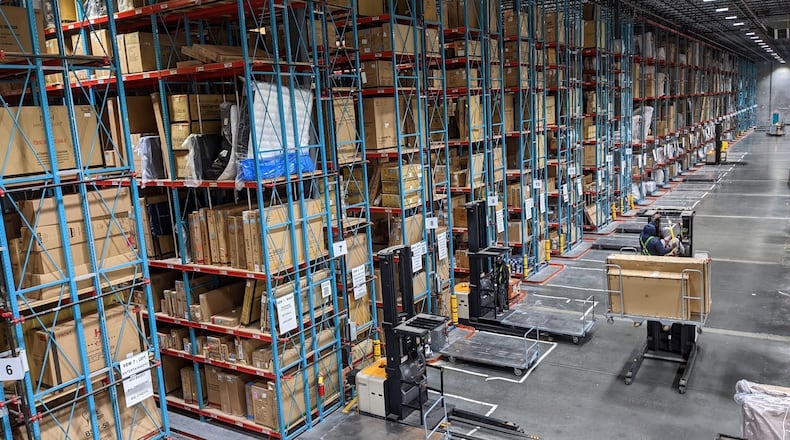The number of new warehouses opening their doors has never been greater in metro Atlanta, but that can’t be said for companies looking to rent large industrial spaces.
Developers delivered 12.7 million square feet of new industrial space from July to September, a record for the Atlanta region, according to real estate services giant CBRE. Next quarter is likely to see a similar record-setting number of new building openings, according to Blaine Kelley, executive vice president of CBRE’s Global Supply Chain Practice in Atlanta.
Since the COVID-19 pandemic disrupted supply chains, developers have not been able to build new warehouses for logistics and distribution centers fast enough. However, demand for large warehouse spaces has declined in recent quarters, which Kelley said shows that Atlanta’s industrial market has yet to strike a post-pandemic balance.
“It’s like two ships passing in the night,” Kelley said. “We have millions of square feet of inventory that’s hitting the streets now that should have been delivered last year. Had it delivered last year, we would have had a market of equilibrium.”
He called it a “yo-yo effect,” where available warehouse space would flip-flop between too little inventory to too much. Vacancy rates nearly fell to 3% in late 2021 and early 2022, but that has increased to 5.8% by the end of September.
Kelley said a healthy industrial market has enough vacancy to give employers options without having so much that rent prices begin to plummet. He predicted vacancy rates will continue to rise over the next few financial quarters, which will result in a more balanced industrial sector with sustainable growth — not the overheated market of the past few years.
“Over the past 18 months, we were actually in a demand bubble,” he said.
One metric of health in real estate is known as absorption. That’s how much space is occupied in a market over a given time while also including new space that’s built or old space being demolished. Positive absorption shows more space is being gobbled up than emptied.
In the third quarter, some 2.6 million square feet of industrial space was absorbed, showing there’s still demand. For comparison, the office market has experienced multiple recent quarters of negative absorption as companies still grapple with hybrid and remote work.
Most of the new warehouses built in metro Atlanta were speculative, meaning they didn’t have any signed tenants before construction began. CBRE found that more than 8 million square feet of industrial space was available at the end of September for sublease, meaning a tenant is trying to get another company to fill its unwanted space. That’s a 26% increase from the second quarter.
“Just as the developers and builders overreached, a lot of third-party logistics companies and retailers took on too much capacity just as their demand fell,” Kelley said. “And so they’re attempting to give that space back.”
The number of new warehouse projects in the development pipeline has steadily declined throughout this year, and Kelley said high interest rates and construction costs will further slow that down. He said that’s good in the short-term, although there’s a risk of an overcorrection — and the yo-yo continues to go up and down.
“If there is no new supply delivered and demand tracks along even at pre-pandemic levels, we could be facing some kind of a resurgence of supply constraints of available space at the tail end of 2024,” Kelley said.
About the Author
Keep Reading
The Latest
Featured



